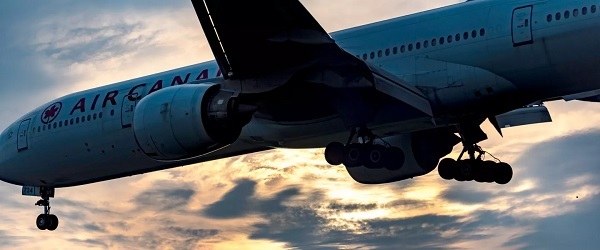By Jake Fuss and Alex Whalen
Canadian air travel can be summed up in a few words—poor service, high ticket prices and little choice. And as a federal election looms, Canadians should understand that bad federal policy is to blame.
According to the International Air Transport Association, Canada ranks 101st out of 116 countries for the cost of air travel. And customer complaints against Canadian airlines have grown more than sixfold between fiscal years 2018/19 and 2022/23.
Why are ticket prices so high?
For starters, taxes and fees (imposed by governments and airports) comprise a large portion (25 to 35 per cent) of airfare costs in Canada. For example, “airport improvement” fees average $32.20 per departing passenger at Canada’s largest airports compared to $6.47 in the United States and $16.38 in Australia. For air traffic control (ATC), airlines pay charges based on distance, geography and other factors, and these costs are passed to consumers. In one illustrative example, to fly a Boeing 777 in Canada, airlines must pay an estimated $802 in ATC fees compared to between $192 and $478 in the United States and $493 in Mexico (all figures in Canadian dollars).
Moreover, Canadians pay between $9.46 and $34.42 per ticket in “security” fees, more than Americans (C$7.65) and Australians (C$4.80). Canada’s “landing” fees—charged by the airports based on the weight of the plane—are among the highest in the world and 35 to 75 per cent higher than at U.S. airports.
Our high fees originate in part due to Canada’s flawed airport ownership structure. The federal government owns the land where Canada’s major airports are built, and leases it back to not-for-profit airport authorities that pay rent—up to 12 per cent of airport revenue—to Ottawa. The airports impose fees on passengers to recoup this revenue.
But while fees help increase costs for airfare in Canada, another culprit is the lack of competition among airlines. Crucially, the federal government prevents foreign airlines from operating domestic routes within Canada’s borders, which severely limits choice and competition. While the government allows a foreign airline such as Lufthansa to fly from Frankfurt to Toronto, it prevents Lufthansa from flying passengers from Toronto to another Canadian city. As a result, there’s little competitive pressure for Canadian airlines to lower their prices for air travel within Canada’s borders.
The European Union, in contrast, removed such restrictions for member-states. The result? More competition including from new low-cost carriers such as Ryanair, a 34 per cent decline in ticket prices, more cross-border routes, and greater flight frequencies. The entry of new low-cost carriers alone helped lower airfares by 20 per cent.
Given the sorry state of air travel in Canada, our new study identifies four ways the federal government can improve competitiveness and lower airfare.
First, the government should reduce taxes and fees to be more in line with other countries. Second, the government should negotiate deals with other countries including the United States to allow foreign airlines to operate within Canada in exchange for Canadian airlines operating in those countries, which would help both Canadian consumers and Canadian airlines. Indeed, according to a 2016 report from the federal government, restrictions on foreign airlines increase air travel costs for Canadians and have outlived their usefulness. The report recommended Canada work towards an “open common market for air services” with peer countries. The key is reciprocity—if U.S. airlines, for example, are allowed access to the Canadian domestic air travel market, Canadian airlines must also have access to the U.S. market.
Third, the federal government should follow in the footsteps of Europe, Australia and New Zealand, and sell its remaining interests in airport leases and allow for-profit organizations to own and operate airports in Canada.
Lastly, the government should reduce the regulatory burden on the airline industry while maintaining strong safety standards. On this front, Canada can emulate the successful deregulation effort undertaken in the United States in the late 1970s and 1980s when widespread reform helped produce more competition, more consumer choice, lower fares and safety improvements.
Canadians will likely head to polls sometime this spring. If the next federal government wants to help improve air travel service quality, increase consumer choice and lower airfares, it should reform Canada’s antiquated airline policies.

Jake Fuss
Director, Fiscal Studies, Fraser Institute

Alex Whalen
Director, Atlantic Canada Prosperity, Fraser Institute
Related













